| | 
Guitars are composed of tonewoods, strings, equipment ( steel as well as plastic), as well as electronic devices-- all working together to develop a music maker. Every guitar is a little bit different, yet there are 3 essential parts-- the headstock, the neck, as well as the body. In this article, we'll analyze as well as discuss all 3 parts as well as their elements.
Headstock
Headstock (A).
The headstock rests at the top of the neck ( contrary the body) where the tuning makers and nut are set up.
Tuning Machines/Tuning Posts (B).
On a common guitar, there are tuning makers which include the adjusting posts to hold each string in position as well as adjusting fixes that turn to change the adjusting.
Nut (C).
The nut is a notched piece of plastic or bone mounted where the headstock satisfies the fretboard of the guitar. The nut has notches where the strings are seated. These notches keep the strings aligned on the fretboard as well as contribute in the string height. It makes a critical contribution to the tone because it is completion point (on the neck side) of the strings.
Neck.
The neck of a guitar is the long, slice of wood in between the headstock as well as the body where you'll find the fretboard, worries, as well as truss pole. Necks are normally connected to the body with screws, glue, or in some cases both.
Fretboard (D).
The fretboard is affixed to the top of the neck and is typically made from tonewoods like rosewood, maple, or ebony to prevent damages or warping. The fretboard is a separate item of wood from the neck and might be the same or a different type of wood, such as a maple fretboard on a maple neck, or a rosewood fretboard on a mahogany neck.
Frets (E).
Frets are the metal strips running across the fretboard. When a string is pushed down behind a fret, it alters the length of that string as well as creates a various note. Many fretboards additionally have fret pens (either dots or blocks or birds) that designate the location of worries 3, 5, 7, as well as 12 ( and also occasionally a lot more) for simple recommendation.
Truss Rod.
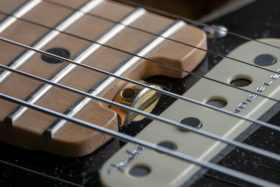
A truss rod is a long, flexible piece of metal that is mounted inside the neck and runs the length of the neck, aiding to keep it from bending under the stress of the strings. A correctly readjusted truss rod is necessary to any type of excellent setup and also aids to remove things like fret buzz, articulation issues, and also various other playability issues.
Body.
The body of your guitar plays a large part in the tonal qualities of your tool. Allow's have a look at the parts of the guitar body and afterwards highlight a few of the similarities and also distinctions between an acoustic as well as electric guitar body.
Cutaway (F).
The cutaway enables a gamer to much more quickly get to the greatest fret placements on the neck.
The top spell is the part of the guitar body that is local the neck.
Reduced Bout (H).
The reduced round is the largest part of the guitar that is local to the string termination at the bridge.
Pickguard (I).
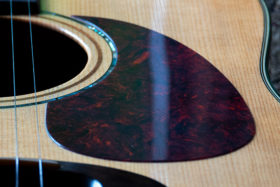
You can think of the pickguard as a shield for your guitar. It is intended to avoid scratches, dings, and wear from the tough pick of even one of the most aggressive strummer. Pickguards can be found in a selection of different shades and also are a simple upgrade on many electric guitars. If you're interested in an upgrade, Sweetwater's Guitar Repair Shop enjoys to aid.
Pick-ups (J).
On guitars the pickup can be in numerous places. On this guitar in the diagram, the pickup lies under the bridge. Normally, electrical guitars featured one, 2, or 3 pickups, and the placement of the pickup plays a large part in your guitar noise. Pickups put closer to the bridge will seem bright and chimy; whereas, pick-ups put closer to the neck will certainly appear warmer and also bassier.
Pick-up Selector Switch (K).
If your guitar has numerous pickups, a pickup selector switch permits you to involve solitary or several pick-up mixes and also gives you the capacity to access a variety of tones.
Quantity and also Tone Knobs/Potentiometers (L).
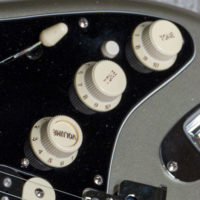
The potentiometers, usually referred to as pots, regulate the volume as well as tone of your guitar. The tone knob( s) permit you to adjust the quantity of high frequency, or illumination, of your guitar, while the volume knob( s) readjust the overall outcome of your guitar.
To get signal out of a guitar, attach one end of a 1/4 ″ guitar cable (TS) to the result jack as well as the other end to your amplifier, DI box, pedal or pedalboard, mixer, or taping interface.
Strap Buttons (N).
Strap buttons permit you to connect a band to your guitar as well as are normally located on the reduced round and also top round of a guitar. It's a wonderful suggestion to update to band locks if you have a guitar that isn't well balanced or if you plan on doing any type of crazy stage antics throughout your solo. Have a look at our band lock alternatives if you're searching for added safety and security.
Next allow's concentrate on the differences in between acoustic and also electric guitars.
Electric Bridge (O).
The electric guitar bridge is the other discontinuation factor for the string. It is extremely essential, since its placement defines the feeling, tone, as well as articulation of the guitar. The string runs either via a tailpiece (P) to the saddle, or through the body. Together with the saddle, the bridge also assists to dial in action as well as modulation. Electric guitar bridges can have extra functions, like a whammy bar that enables you to raise or reduce the pitch.
Acoustic Bridge (O).
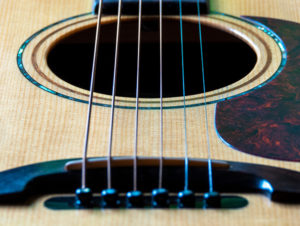
A guitar bridge holds the saddle and safeguards the strings in position using bridge pins. The saddle is normally constructed from bone, plastic, or some type of graphite product. The string runs over the saddle and is kept in area by a bridge pin. When a string is plucked or played, the resonance is transferred with the saddle, to the bridge, as well as to the top (soundboard) of the guitar.
Soundhole (Q).
The hole in the top of an acoustic guitar is called the soundhole. The hollow body of an acoustic guitar enables the bass frequencies generated from the strings to reverberate and also be intensified and after that project with the soundhole, while the top acts to improve the mid and high frequencies. Some soundholes might be off center or shaped in different ways (like an ƒ-hole).
Strings.
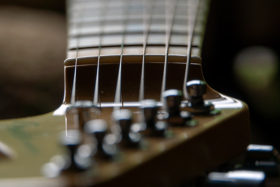
A guitar string usually includes a thin core with wire twisted around it ( when it comes to bass strings) or simply the core by itself (for higher strings). The thicker the string or core, the lower the pitch. You can find strings that are roundwound as well as flatwound and made from a variety of steels, including steel, nickel, and/or bronze-- each with its very own noise and also qualities. | | | |
|





